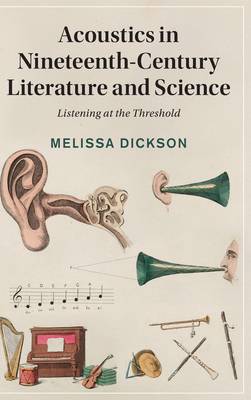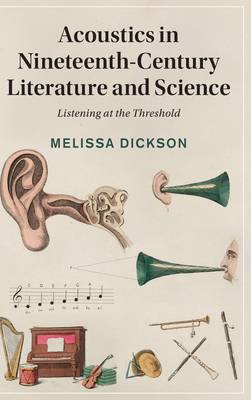
Door een staking bij bpost kan je online bestelling op dit moment iets langer onderweg zijn dan voorzien. Dringend iets nodig? Onze winkels ontvangen jou met open armen!
- Afhalen na 1 uur in een winkel met voorraad
- Gratis thuislevering in België vanaf € 30
- Ruim aanbod met 7 miljoen producten
Door een staking bij bpost kan je online bestelling op dit moment iets langer onderweg zijn dan voorzien. Dringend iets nodig? Onze winkels ontvangen jou met open armen!
- Afhalen na 1 uur in een winkel met voorraad
- Gratis thuislevering in België vanaf € 30
- Ruim aanbod met 7 miljoen producten
Zoeken
€ 172,95
+ 345 punten
Omschrijving
What did it mean to hear, for the first time, what George Eliot described as 'that roar which lies on the other side of silence'? Rapid developments in nineteenth-century acoustic science and communications technologies opened up new worlds beyond the limits of normal audibility for the Victorian public. Weaving together explorations of scientific developments with imaginative cultural, spiritual, and literary responses, this book sets out to explore the burgeoning field of acoustics in the nineteenth century and the new language, structure, and conceptual models it offered to broker the boundaries of the individual self. Ranging from Eliot's Middlemarch to Du Maurier's Trilby, and from Laënnec's work on the stethoscope to experiments on animal audition, inquiries into the unconscious, and spiritualist investigations of the hidden world of vibrations, it demonstrates the profound challenge to the boundaries of the human that was issued by new sound technologies in the Victorian period.
Specificaties
Betrokkenen
- Auteur(s):
- Uitgeverij:
Inhoud
- Aantal bladzijden:
- 314
- Taal:
- Engels
- Reeks:
- Reeksnummer:
- nr. 151
Eigenschappen
- Productcode (EAN):
- 9781009490450
- Verschijningsdatum:
- 19/12/2024
- Uitvoering:
- Hardcover
- Formaat:
- Genaaid
- Afmetingen:
- 152 mm x 229 mm
- Gewicht:
- 589 g

Alleen bij Standaard Boekhandel
+ 345 punten op je klantenkaart van Standaard Boekhandel
Beoordelingen
We publiceren alleen reviews die voldoen aan de voorwaarden voor reviews. Bekijk onze voorwaarden voor reviews.











